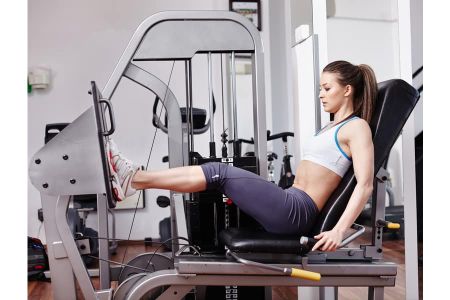For beginners, essential equipment and guides include proper clothing, sturdy shoes, and a reliable backpack. Additionally, learning basic navigation skills and carrying essentials like water and snacks are crucial for a successful outdoor adventure.
As a beginner, it’s important to start with manageable trails and gradually increase difficulty levels. Familiarize yourself with trail maps, understand trail markers, and always inform someone of your hiking plans. Research the terrain, weather conditions, and wildlife of the area you plan to explore to ensure a safe and enjoyable experience.
Remember to respect nature, leave no trace, and always prioritize safety above all else when venturing into the great outdoors.

Credit: fitpage.in
Starting With The Basics
If you’re new to a sport or activity, it can be overwhelming to figure out where to start. With so many options for equipment and guides, it’s hard to know what you actually need and what’s just extra. In this guide, we’ll break down the basics of starting a new sport or activity, including how to choose the right equipment and set realistic goals.
Choosing The Right Equipment
When it comes to choosing equipment for a new activity, it’s important to start with the basics. Don’t get bogged down in all the bells and whistles of advanced equipment – you can always upgrade later if you decide to stick with the sport. Here are some tips for choosing the right equipment:
- Do your research – read reviews and ask for recommendations from friends or coaches
- Try before you buy – see if you can rent or borrow equipment before committing to a purchase
- Consider your skill level – if you’re a beginner, you don’t need the most advanced equipment on the market
- Think about safety – make sure your equipment is appropriate for your level of experience and provides adequate protection
Setting Realistic Goals
When starting a new sport or activity, it’s important to set realistic goals. Don’t expect to become an expert overnight – progress takes time and effort. Here are some tips for setting realistic goals:
- Start small – don’t overwhelm yourself with lofty goals
- Be specific – set concrete, achievable goals that you can measure
- Track your progress – keep a record of your achievements, no matter how small
- Stay motivated – celebrate your successes and don’t get discouraged by setbacks
By starting with the basics and setting realistic goals, you’ll be on your way to success in your new sport or activity. Remember to enjoy the process and have fun!
Understanding Your Equipment Needs
Essential Items For Beginners
As a beginner, it’s important to start with the essential items that will set you up for success. These include a reliable camera, tripod, memory cards, and lenses suitable for your interests, such as landscape, portrait, or macro photography. Investing in these basics will ensure you’re ready to capture stunning images from the outset.
When To Invest In High-end Gear
While it’s crucial to begin with the fundamentals, there comes a point when upgrading to high-end gear can elevate your photography to the next level. Consider investing in premium equipment when you’ve mastered the basics and are seeking to expand your technical capabilities or pursue professional opportunities. High-quality cameras, specialized lenses, and advanced lighting equipment can significantly enhance the quality of your work.
Essential Tips For First-time Users
When it comes to using equipment and guides for the first time, there are a few essential tips that can help beginners navigate the process with ease. By following these tips, first-time users can ensure a smooth and successful experience.
Reading The Manual Thoroughly
One of the most important steps for first-time users is to read the manual thoroughly. The manual provides valuable information about the equipment, including its features, functions, and safety precautions. By reading the manual carefully, beginners can gain a better understanding of how to use the equipment correctly and efficiently.
Seeking Advice From Experienced Individuals
Seeking advice from experienced individuals can be incredibly helpful for first-time users. Whether it’s a friend, colleague, or an online community, reaching out to those with prior experience can provide valuable insights and tips. By tapping into their knowledge and expertise, beginners can gain confidence and avoid common mistakes.
Safety First: Gear Up Properly
When it comes to any outdoor activity or sport, safety should always be the top priority. As a beginner, it is crucial to understand the importance of protective equipment and the necessary safety checks before using any equipment. By taking the necessary precautions and gearing up properly, you can ensure a safe and enjoyable experience. In this section, we will explore the significance of protective equipment and the essential safety checks that should be performed before using any equipment.
The Importance Of Protective Equipment
Protective equipment plays a vital role in safeguarding yourself from potential injuries during your outdoor adventures. Whether you are indulging in cycling, hiking, or any other activity, the right gear can make a significant difference in protecting your body.
Here are some essential protective equipment items that beginners should consider investing in:
- Helmet: A helmet is a must-have for activities such as cycling, skateboarding, or rollerblading. It protects your head from impact and reduces the risk of head injuries.
- Knee and Elbow Pads: For activities that involve high-speed or potential falls, knee and elbow pads provide an extra layer of protection for these vulnerable joints.
- Protective Eyewear: Whether it’s goggles for skiing or sunglasses for hiking, protective eyewear shields your eyes from harmful UV rays, debris, and other potential hazards.
- Proper Footwear: Wearing appropriate shoes or boots with good grip and ankle support can prevent slips, sprains, and other foot-related injuries.
- Protective Clothing: Depending on the activity, wearing clothing made of durable and weather-resistant materials can protect you from scratches, cuts, and harsh weather conditions.
Safety Checks Before Use
Before using any equipment, it is essential to perform safety checks to ensure everything is in proper working condition. By taking a few minutes to inspect your gear, you can minimize the risk of accidents and malfunctions.
Here is a simple checklist for performing safety checks:
- Inspect the Equipment: Check for any visible damage, such as cracks, tears, or loose parts. If you notice any issues, it’s crucial to address them before using the equipment.
- Test the Functionality: Ensure that all adjustable features, such as straps, buckles, or zippers, are working correctly. Test the equipment’s functionality to make sure it performs as intended.
- Check for Proper Fit: Protective gear should fit snugly without being too tight or too loose. Ensure that helmets, pads, and other equipment fit properly to provide optimal protection.
- Follow Usage Guidelines: Familiarize yourself with the manufacturer’s instructions and guidelines for using the equipment. Adhering to these guidelines will help you maximize safety and prolong the lifespan of your gear.
By prioritizing safety and following these safety checks, you can minimize the risk of accidents, enhance your performance, and enjoy your outdoor activities with peace of mind.
Maintenance And Care Of Equipment
Discover essential maintenance and care tips for beginners’ equipment, ensuring longevity and optimal performance. Proper cleaning and regular inspections are key to equipment durability and user safety. Master the basics to enhance your equipment’s lifespan and efficiency.
Maintenance and care of equipment are essential for beginners to ensure the longevity and optimal performance of their gear. Routine cleaning tips, proper storage solutions, and regular maintenance will help beginners get the most out of their equipment. Let’s delve into these key aspects to ensure that your gear stays in top condition.Routine Cleaning Tips
Regular cleaning is vital to keep your equipment in top condition. Use a soft, damp cloth to wipe down the surfaces of your equipment. For more thorough cleaning, follow the manufacturer’s guidelines to avoid damaging delicate components. It’s advisable to use specialized cleaning solutions for specific equipment to ensure proper maintenance.Storage Solutions For Longevity
Proper storage is essential for maintaining the quality and lifespan of your equipment. Consider investing in protective cases or covers to shield your gear from dust, moisture, and accidental damage. Store your equipment in a dry, temperature-controlled environment to prevent rust and corrosion. Additionally, utilizing dedicated storage racks or shelves can help prevent unnecessary wear and tear.By adhering to these maintenance and care practices, beginners can ensure that their equipment remains in peak condition, ultimately enhancing their overall experience.
Credit: www.styleontheside.com
Learning From The Pros
Beginners can accelerate their learning curve by observing and learning from experienced professionals in the field. By understanding their techniques and strategies, newcomers can gain valuable insights that can help them improve their skills quickly.
Finding Reliable Guides And Tutorials
Quality guides and tutorials can be found online on platforms like YouTube and blogs. Look for content created by reputable experts in the industry to ensure you are getting accurate and up-to-date information.
Workshops And Training Sessions Worth Attending
Attending workshops and training sessions conducted by seasoned professionals can provide hands-on experience and personalized guidance. Interacting with experts in person can give beginners the opportunity to ask questions and receive direct feedback.
Practice Makes Perfect
Practice makes perfect when it comes to mastering any new skill, including using equipment and guides for beginners. Setting up a practice schedule and tracking progress over time are key components of improvement.
Setting Up A Practice Schedule
Consistency is vital for beginners; set specific days and times for practice.
Tracking Progress Over Time
Document improvements regularly to stay motivated and see growth.
Joining A Community
Joining a Community is a crucial step for beginners looking to learn about equipment and guides. This provides a platform for sharing experiences and gaining valuable insights.
Benefits Of Networking With Fellow Beginners
Connect with others to exchange tips and tricks.
- Share experiences and learn from each other.
- Gain support and motivation.
Finding Local Groups And Online Forums
Discover communities both in-person and online.
- Join local groups for hands-on experience.
- Engage in online forums for broader connections.

Credit: www.flexequipment.com.au
Frequently Asked Questions
What Are The Essential Equipment For Beginners?
As a beginner, you will need basic equipment such as a sturdy pair of hiking boots, a comfortable backpack, a reliable tent, a warm sleeping bag, and a portable water filter. These items are essential for a safe and enjoyable outdoor experience.
How Can Beginners Choose The Right Hiking Boots?
When selecting hiking boots, beginners should consider factors like fit, ankle support, traction, and waterproofing. It’s important to try on different styles, walk around the store, and seek professional guidance to ensure the boots provide comfort and protection during hikes.
What Are The Key Elements Of A Beginner’s Hiking Backpack?
For beginners, a suitable hiking backpack should have adjustable straps, multiple compartments for organization, padded hip belts for comfort, and a hydration system compatibility. These features will help beginners carry essential gear comfortably during their outdoor adventures.
Conclusion
Starting out in any new hobby or sport can be overwhelming. However, having the right equipment and guides can make all the difference. As a beginner, it’s important to invest in quality gear that suits your needs, and to seek out reputable sources for guidance and instruction.
By doing so, you’ll be setting yourself up for success and making the most of your new endeavor. Remember to take it slow, stay safe, and have fun!


![Top 10 Spiritual Books of All Time ([Top 10 Spiritual Books of All Time List])](https://asksprit.com/wp-content/uploads/2024/06/top-10-spiritual-books-of-all-time-top-10-spiritual-books-of-all-time-list-150x150.png)
